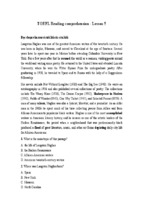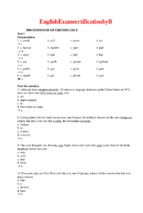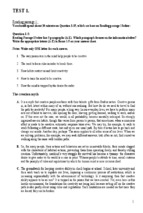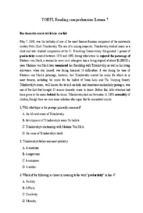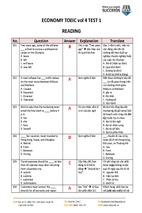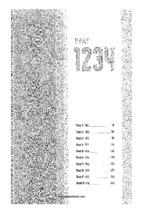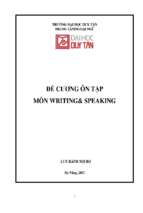IMPACT ASSESSMENT OF FOREIGN DIRECT INVESTMENT (FDI)
ON THE ECONOMY OF HUNG YEN PROVINCE (1998-2010)
___________________________
A DISSERTATION
Presented to the Faculty of the Graduate School
Southern Luzon State University, Lucban, Quezon, Philippines
in Collaboration with
Thai Nguyen University, Socialist Republic of Vietnam
___________________________
In Partial Fulfillment
of the Requirements for the Degree
Doctor of Business Administration
___________________________
By
PHAM THI TUYET NHUNG (ANNA)
December 2013
i
APPROVAL SHEET
The Dissertation of
PHAM THI TUYET NHUNG
entitled
IMPACT ASSESSMENT OF FOREIGN DIRECT INVESTMENT (FDI) ON
THE ECONOMY OF HUNG YEN PROVINCE (1998-2010)
Submitted in Partial Fulfilment of the Requirements for the Degree
DOCTOR OF BUSINESS ADMINISTRATION
A program offered by Southern Luzon State University,
Republic of the Philippines in collaboration with
Thai Nguyen University, Socialist Republic of Vietnam
has been approved by Oral Examination Committee
WALBERTO A. MACARAAN, EdD
Expert
CONRADO L. ABRAHAM, PhD
Expert
MELCHOR MELO O. PLACINO, PhD
Expert
EDWIN P. BERNAL, DBA
External Panel
CECILIA N. GASCON, PhD
Chairman
Endorsed by:
Recommended by:
TRAN CHI THIEN, PhD
Adviser
APOLONIA A. ESPINOSA, PhD
Dean
Accepted in Partial Fulfilment of the Requirements for the Degree
Doctor of Business Administration
_____________________
Date
WALBERTO A. MACARAAN, EdD
Vice President for Academic Affairs
ii
CERTIFICATE OF ORIGINALITY
This is to certify that the dissertation entitled: “IMPACT ASSESSMENT
OF FOREIGN DIRECT INVESTMENT (FDI) ON THE ECONOMY OF HUNG
YEN PROVINCE (1998-2010)”, orally defended under the DBA Program
jointly offered
by Southern Luzon State University of the Republic of the
Philippines and Thai Nguyen University of the Socialist Republic of Vietnam,
embodies the result of original and scholarly work carried out by the
undersigned.
This dissertation does not contain words or ideas taken from published
sources or written works by other persons which have been accepted as basis
for the award of any degree from other higher education institutions, except
where proper referencing and acknowledgement were made.
PHAM THI TUYET NHUNG
Candidate
Date Orally Defended: June 24, 2013
iii
ACKNOWLEDGMENT
Throughout the course of research leading to the completion of this
dissertation, the researcher would like to express her deep gratitude to the
following persons who have supported her with tremendous help in one way
or another:
Associate Professor, Dr. Tran Chi Thien, her advisor, for his
invaluable thoughts, insightful suggestions and useful guidance throughout
the writing of the dissertation;
Committee Members, for their propositions, valuable comments, and
constructive suggestions, which were of substantial value to this study;
Professors of Southern Luzon State University (SLSU) and Thai
Nguyen University (TNU), for their insightful lectures in different subjects that
provided her knowledge and technique to develop a good research.
Friends and colleagues, for their meaningful discussion, hospitality
and friendship;
Finally, her parents, her husband, her sons and her brother, who
always encourage and help her in every situation. They have been a great
source of encouragement, enhancing her strength to overcome difficulties
during the completion of the DBA program.
Pham Thi Tuyet Nhung
iv
DEDICATION
This intellectual endeavor is wholeheartedly dedicated
to my friends and colleagues, my parents,
my husband, my sons and my brother.
Pham Thi Tuyet Nhung
v
TABLE OF CONTENTS
PAGE
TITLE PAGE ………………………………………………………………..
i
APPROVAL SHEET ……………………………………………………….
ii
CERTIFICATE OF ORIGINALITY ………………………………………..
iii
ACKNOWLEDGMENT …………………………………………………..
iv
DEDICATION ………………………………………………………………
v
TABLE OF CONTENTS …………………………………………………..
vi
LIST OF TABLES ………………………………………………………….
viii
LIST OF FIGURES ………………………………………………………...
ix
LIST OF APPENDICES …………………………………………………...
x
ABSTRACT …………………………………………………………………
xi
CHAPTER
I
2
Objectives of the Study …………………………………….
3
Hypothesis of the Study ……………………………………
4
Significance of the Study …………………………………..
4
Scope and Limitations of the Study ………………………
5
Definition of Terms ………………………………………….
5
REVIEW OF LITERATURE ……………………………….
7
Theoretical Framework ………………………………….…
III
1
Background of the Study …………………………………..
II
INTRODUCTION ……………………………………………
29
METHODOLOGY
Research Design ……………………………………………
Data Gathering Procedure …………………...……………
32
Statistical Treatment …………………..……………………
33
Analytical Framework …….……………………….…….….
IV
30
44
RESULTS AND DISCUSSIONS ………………………….
46
vi
V
SUMMARY, CONCLUSIONS AND
RECOMMENDATIONS
Summary ……………….……………………………………
79
Conclusions …………………………………………………
79
Recommendations …………………………………………
80
REFERENCES ……………………………………………………………..
82
APPENDICES ……………………………………………………………...
87
CURRICULUM VITAE …………………………………………………….
95
vii
LIST OF TABLES
TABLE
1
PAGE
Comparison of the Component Indicators of PCI of Hung
Yen Province to the Highest Score of Vietnam in 2010 …...
49
Comparison of the Component Indicators of PCI of Hung
Yen Province to the Highest Score of Vietnam In 2012 …...
50
3
Summary of ADF Unit Root Test Result …………………….
53
4
Summary of PP Unit Root Test Result ………………………
54
5
The Result of the Model (I) Estimation ………………………
56
6
The Result of the Serial Correlation Test in Model (I) ……..
58
7
The Result of the Heteroskedasticity Test in Model (I) …….
59
8
Result of the Model’s (II) Estimation …………………………
61
9
Result of the Serial Correction Test in Model (II) …………..
63
10
The Result of the Heteroskedasticity Test in Model (II) ……
64
11
The Result of the Model (III) Estimation …………………….
66
12
The Result of the Serial Correction Test in Model (III) …….
68
13
The Result of the Heteroskedasticity Test in Model (III) …..
69
14
The Result of the Model (IV) Estimation …………………….
70
15
Result of the Serial Correction Test in Model (IV) ………….
73
16
Result of the Heteroskedasticity Test in Model (IV) ………..
74
17
Summary of the Result of the OLS Estimation ……………..
76
18
The Result of Projection ………………………………………
2
viii
78
LIST OF FIGURES
FIGURE
PAGE
1
Foreign Direct Investment in Vietnam from 1988-2012 ……..
17
2
Rate of the Implemented FDI capita in Vietnam in 19882012 ………………………………………………………………
17
3
Theoretical Framework ………………………………………………..
29
4
Analytical Framework …………………………………………...
44
5
PCI of Hung Yen Province from 2005-2012 ………………….
48
6
Impact of PCI on FDI Inflows in Hung Yen Province ………..
51
7
The Development Trends of Variables ………………………..
52
8
Result of the Normal Distribution Test for Residual in Model
(I) ………………………………………………………………….
57
The Result of the Normal Distribution Test for Residual in
Model (II) …………………………………………………………
62
The Result of the Normal Distribution Test for Residual in
Model (III) ………………………………………………………...
67
The Result of the Normal Distribution Test for Residual in
Model (IV) ………………………………………………………...
72
9
10
11
ix
LIST OF APPENDICES
APPENDIX
PAGE
A
Provincial Competitiveness Index of Hung Yen Province .
88
B
Correlation Matrix of Variables ……………………………..
89
C
Data on the Indicators in Hung Yen Province …………….
90
D
FDI in Vietnam for the Period 1988-2012 …………………
91
E
Descriptive Statistics of Variables ………………………….
92
F
FDI inflows in Vietnam by Province up to December 2012
93
`
x
ABSTRACT
Title of Research
: IMPACT ASSESSMENT OF FOREIGN DIRECT
INVESTMENT (FDI) ON THE ECONOMY OF
HUNG YEN PROVINCE (1998-2010)
Researcher
: PHAM THI TUYET NHUNG (ANNA)
Degree Conferred
: DOCTOR OF BUSINESS ADMINISTRATION
Name and Address
of Institution
: Southern Luzon State University Lucban, Quezon,
Philippines and Thai Nguyen University, Socialist
Republic of Vietnam
Adviser
: Dr. Tran Chi Thien
Year Written
: 2013
______________________________________________________________
Foreign Direct Investment (FDI) is often seen as an important catalyst
for economic growth in developing countries. It affects the economic growth of
the host country by stimulating domestic investment, increasing human capital
formation and facilitating technology transfer. Regional Gross Domestic
Product, Taxes Generation, Export and FDI Labor are often considered the
indicators to evaluate the contribution of FDI on the economy of a province.
The main purpose of the study is to investigate impacts of FDI on the
economy of Hung Yen, measured by four economic indicators, i.e. Regional
Gross Domestic Product, Taxes Generation, Export and FDI Labor. The study
used annual data series for the period of 1998-2010. The relationships
between FDI and the indicators were analyzed by using Distributed-Lag
models. The results of the study showed positive and statistically insignificant
relations between FDI inflows and the Regional Gross Domestic Product,
Taxes Generation, Export, FDI Labor respectively in Hung Yen. Policy
xi
recommendations are suggested in the light of the results obtained, regarding
FDI in the province.
xii
1
Chapter I
INTRODUCTION
Today, globalization is an increasingly recognized process and
becomes an inevitable trend of development in human history. When
globalization and international economic integration take place more rapidly in
both size and speed, competition becomes tougher in the world market.
Foreign Direct Investment (FDI) is increasingly important for development of
economy of nations. It is claimed that FDI can create employment, increase
technological
development
in
the
host
country
and
improve
the
economic condition of the country in general. FDI is a sign to evaluate the
policy and economic outlook of a nation. FDI is the motivation to make
extensive changes in the development of international relations such as
political, economic, diplomatic, etc. Simultaneously, FDI becomes a sharp
instrument for development and global integration, market extension, cost
reduction and enhancement of competitive advantages of nations. Townsend
(2003) said the relationship between foreign direct investment and
economic growth is not so clear. There are different views by researchers
on the contributions of FDI to economic growth, based on theoretical and
analytical findings. Some scholars see FDI as a very important tool for
economic growth especially in the less developed countries (LDCs), but
others claim that the contribution of FDI to economic development is not as
pronounced as most people believe, even some think FDI has no positive
contribution
to
the
economic growth of the host country. For example,
Nuzhat Falki (2009) examined the Impact of FDI on Economic Growth of
Pakistan from 1980 to 2006. She concluded that it has a negative and
2
statically insignificant relationship between GDP and FDI inflows in Pakistan
in this period. Pardeep (2000) founded that the increase in FDI inflows in
South Asia were associated with a many-fold increase in the investment by
national investors, suggesting that there exist linkage effects between FDI and
GDP. The impact of FDI on GDP growth was found to be negative prior to
1980, mildly positive for early eighties and strongly positive over the late
eighties and nineties. It could be seen that there has been no consensus
opinion on FDI and economic growth.
Background of the Study
In Vietnam, the important role of FDI has been acknowledged for the
last 20 years. Since the launch of market-oriented economic reforms in 1986,
Vietnam has been among the fastest growing countries in Southeast Asia with
the active participation of foreign investors in all fields of the economy.
Vietnamese government has quickly jointed the competition for foreign direct
investment into regional and global markets by restructuring the domestic
economy and opening up the economy to external trade and investment
(Hoang Thi Thu, 2013). The FDI capital has been supporting provinces to
restructure the economy towards industrialization and modernization to create
many new industries and products. It also contributed to improving
management capacity, increasing labor productivity, developing technology,
expanding export markets, creating jobs, and improving living standards of
workers. However, in recent years, some problems, related to FDI, occurred
in Vietnam. For example, Vedan company discharged the waste to the ThiVai
3
River, over 100 golf course projects were licensed, capacity of cement plants
increased rapidly to levels that exceed the domestic demand, etc.
Hung Yen is a delta province, located in the key economic zone of
Northern Vietnam. It has advantages of natural conditions and infrastructure.
After the Foreign Investment Law was issued (in December, 1987), Hung Yen
has attracted a flow of FDI capital to some of its key industries, and this
contributed significantly to the restructuring of the province economy. The
attraction and use of FDI capital not only contribute to economic development
of the province, but also the entire key economic zone in Northern Vietnam.
Hung Yen’s economy has greatly transformed since FDI activities were
implemented. Therefore, it is highly necessary to conduct assessment of the
impact of FDI on the economy of Hung Yen province. This assessment would
be a good basis for the authority to issue appropriate policies on economic
development of the province.
Objectives of the Study
In this study, the relationship between FDI and the economy in the
province was discussed, and the contribution of FDI to growth was
investigated. To perform this analysis, scholarly opinions and suggestions
were discussed and empirical analysis on FDI was carried out.
The objectives of the study are:
1. Investigate the effect of PCI on FDI inflows in Hung Yen Province.
2. Assess the contribution of FDI on the economy of Hung Yen Province
in terms of economic indicators namely:
2.1 RGDP
4
2.2 Taxes Generation
2.3 Export
2.4 FDI Labor
3. Prepare a 5-year projection (2013-2017) using the given models on the
following:
3.1 FDI inflows
3.4 Exports
3.2 RGDP
3.5 FDI Labor
3.3 Taxes
Hypotheses
Hypothesis 1: PCI affects FDI in Hung Yen province in the period of 20052012.
Hypothesis 2: FDI inflows positively contribute to RGDP of Hung Yen
province.
Hypothesis 3: FDI inflows positively contribute to Taxes Generation of Hung
Yen province.
Hypothesis 4: FDI inflows positively contribute to Export of Hung Yen
province.
Hypothesis 5: FDI inflows positively contribute to FDI Labor of Hung Yen
province.
Significance of the Study
The study shall become noteworthy to the following subjects:
Officials of the Province. The result of the study can serve as a basis
to revise some policies as well as devise an appropriate attraction towards
FDI strategy for the development of the province.
5
Investors. The result of the study may help investors realize the
advantages they can have in doing business in the province, so that they
may get interested to make new or expand existing investments in the
province.
Business students and Future Researchers. This study can serve
as benchmark information for related studies.
Researcher. This work is a test of her knowledge in business and her
ability to engage in a research work.
Scope and Limitation of the Study
Hung Yen province is located next to Hanoi, the capital of Vietnam.
Hung Yen province includes nine districts: Van Lam, My Hao, Yen My, Kim
Dong, Phu Cu, Tien Lu, Van Giang, Khoai Chau, An Thi, and one city under
province is Hung Yen.
The author studied the influences of PCI on the FDI attraction and the
impacts of FDI on fours economic indicators: Regional Gross Domestic
Product, Export, Taxes Generation and FDI Labor.
The thesis concentrated on the period between 1998 and 2010 based
on the secondary data.
Definition of Terms
For better understanding of the study, the following terms were
operationally defined:
Domestic Investment. Investment in the companies and products of the host
country rather than in those of foreign countries.
6
Export. The value of goods and services sold overseas.
Foreign Direct Investment (FDI). Investment directed to production or
services in a country by a company located in another country, either
by buying a company of the host country or expanding the existing
business to the host country.
FDI Labor. These are the total employees working in FDI enterprises. The
FDI Labor is one of the economic indicators to evaluate the contribution
of FDI inflows in the economy.
Provincial Competitiveness Index (PCI). An index used to evaluate and
rank
the
performance
of
economic
governance
including the
construction of a favorable business environment for enterprise
development of Vietnam’s provinces.
Regional Gross Domestic Product (RGDP). The market value of all officially
recognized final goods and services produced within a region in a
given period of time.
Taxes Generation. The total tax revenue of the province’ budget contributed
by the FDI enterprise.
7
Chapter II
REVIEW OF LITERATURE
In analyzing the contribution of FDI on economy, it is necessary to
know the type of investment that is qualified as FDI. This section discusses
the
investments
that
can
be called FDI and
those
involved
in
it.
Simultaneously, the factors of economy are effected by FDI will be discussed.
It also reviews previous researches on the relationship between FDI and
economic growth on FDI flows to developing countries in general and to
Vietnam in particular.
Provincial Competitiveness Index (PCI)
The Provincial Competitiveness Index (PCI) was developed in 2005
by the Vietnamese Chamber of Commerce and Industry (VCCI) and the U.S.
Agency for International Development-supported Vietnam Competitiveness
Initiative (USAID/VNCI). As one of the largest and most comprehensive social
surveys in Vietnam, the PCI became a critical tool for measuring and
assessing the standards of economic governance in Vietnam’s 63 provinces
from the perspective of private sector businesses, covering business-critical
issues of entry costs, compliance costs, land access, informal charges and
governance qualities on pro-activity, transparency, labor development and
legal institutions. The PCI also includes an index assessing quality of
provinces’ infrastructure as one of the most critical barriers to investment and
growth in the country. The PCI exercise is not intended to be a purely
academic exercise, nor to ‘point fingers’ at individual provinces that rank
lowest or highest. Rather, the PCI attempts to provide provinces robust
8
information that can help provinces and municipalities to identify where and
how they can pursue economic governance reforms to optimal effect. The PCI
has triggered a radical change in motivating provincial reform efforts with over
40 provinces conducting PCI diagnostic workshops to engage public-private
dialogue or issue resolutions to improve governance performance. To position
the PCI on a higher level, surveys have been expanded to reach FDI business
voices to draw a more comprehensive picture of Vietnam business climate for
policy-makers during their decision-making process. (www.pcivietnam.org)
Foreign Direct Investment
Foreign Direct Investment (FDI) is investment flowing directly into
production or services in a country by a company located in another country,
either by buying a company in the target country or by expanding operations
of an existing business in that country. Foreign direct investment is made for
many reasons including to take advantage of cheaper wages in the host
country, special investment privileges such as tax exemptions offered by the
country as an incentive to gain tariff-free access to the market of the host
country or of the host region. Foreign direct investment is in contrast to
portfolio investment, which is a passive investment in the securities of another
country such as stocks and bonds.
As a part of the national accounts of a country, FDI refers to the net
inflows of investment to acquire a lasting management interest (10 percent or
more of voting stock) in an enterprise operating in an economy other than that
of the investor. It is the sum of equity capital, reinvestment of earnings, other
long-term capital, and short-term capital as shown on the balance of
- Xem thêm -



